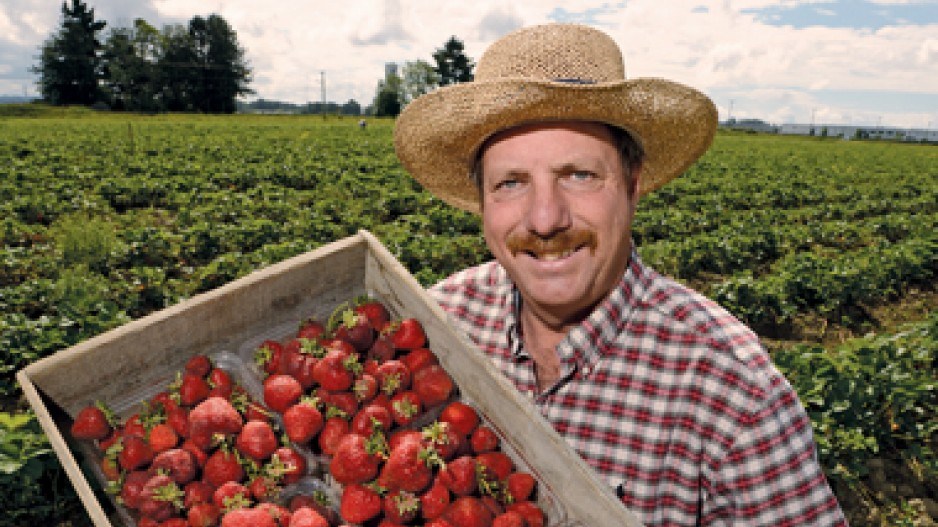The best local strawberry season in at least six years is proving to be a boon for farmers – and the bumper berry crop is helping cut prices in a year when increases were expected because of higher expenses.
W.A. Farms owner Bill Zylmans started picking strawberries June 3 and expects the season to continue until around July 4. That’s about twice as long as it was last year, when Zylmans started picking strawberries on June 20 and continued until July 4.
“It doesn’t matter when you start picking, you can’t go much beyond the first week of July,” Zylmans told Business in Vancouver.
“The weather has been perfect for strawberries, with the occasional shower and times of being overcast. Temperatures have hovered between 16 C and 21 C, which is ideal to get strawberries plump, juicy and big.”
Strawberry U-pick prices are about $2 per pound whereas retail stores tend to sell them for about $3 per pound.
Hikes to the minimum wage combined with higher prices for fertilizer, containers, fuel and electricity meant farmers were expecting to have to charge more for their berries this year.
But the bumper crop and higher-quality large berries mean they can offset their higher costs by selling more berries instead of raising prices.
Zylmans said that one challenge this year has been that many retailers in early June were not ready to buy local berries because they had already ordered supplies from California.
That drove down the California berry prices to $2 per pound in many markets.
“Not us,” Kin’s Farm Market purchasing manager Victor Lau told BIV.
“The vast majority of our strawberries now are delivered fresh every day, and they’re local.”
Lau’s employees were in contact with local farmers in May to ensure that as soon as local fruit was available, Kin’s would have available shelf space.
B.C. growers’ stiffest competition comes from California.
New higher yielding, hardier varieties are being developed in B.C. to help local farmers compete, extend the fresh market season and reduce the per-unit cost of production, according to B.C.’s Ministry of Agriculture.
To reduce pesticide use, considerable research and development has been invested in developing an integrated pest- management program, which maximizes the use of naturally occurring biological control agents.
For example, Zylmans doesn’t spray his strawberries with any pesticide. He adds a granular fertilizer in the spring so he makes no claim that his fruit is organic.
According to government statistics, B.C. farmers produce more than three million kilograms of strawberries, worth about $6 million.
That’s about 25% of Canadian strawberry production.




